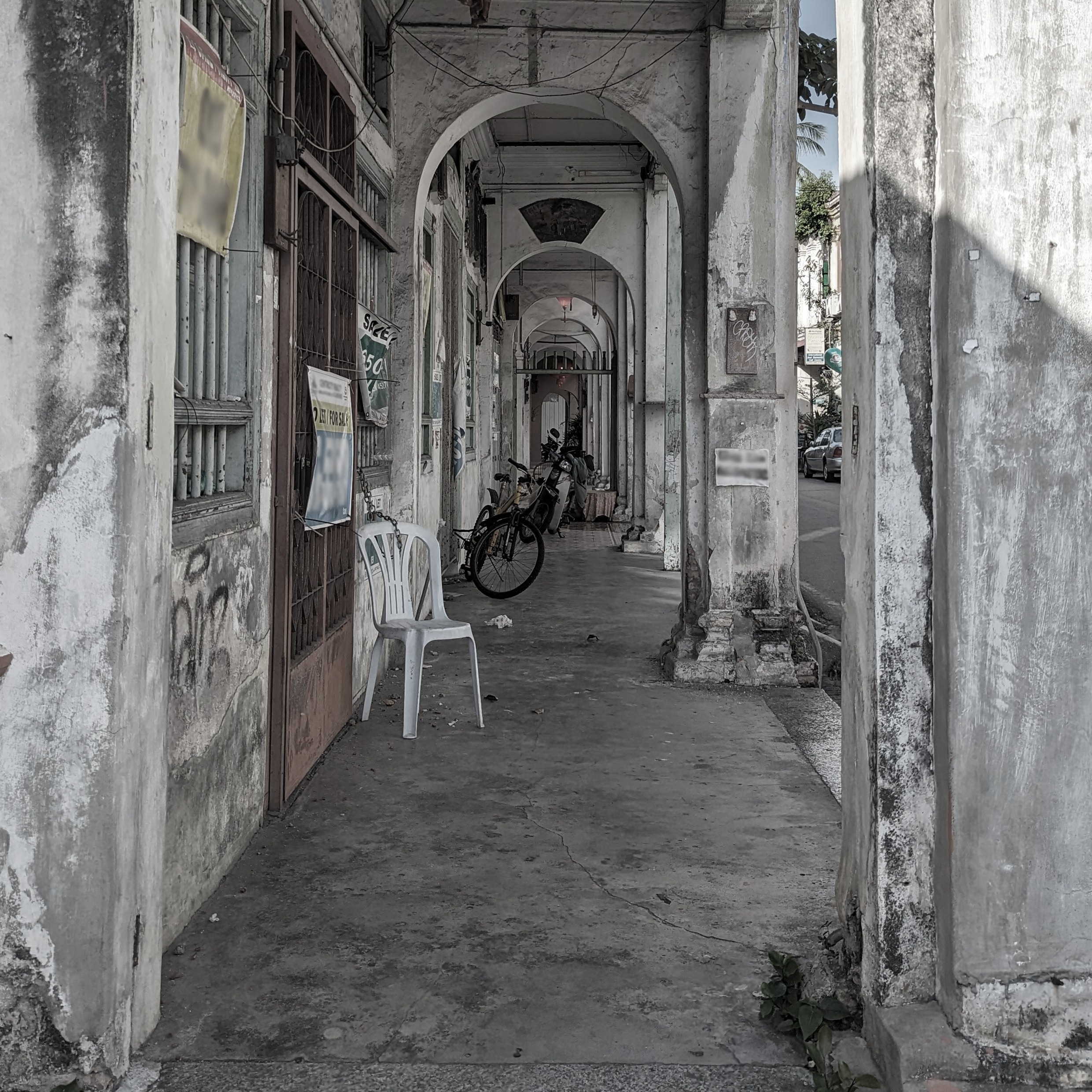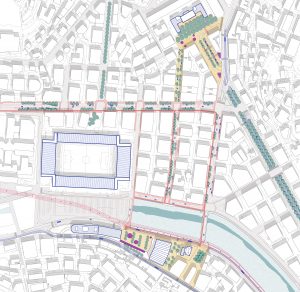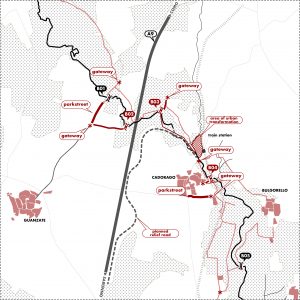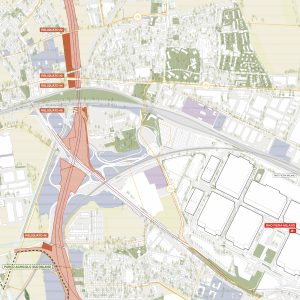This paper explores the problems of modifications and adaptations breaking the continuity of five-footways, a shaded pedestrian pathway typically found in the Malaysian urban fabric, especially in historical cities such as George Town. It aims to critically examine: the motivations behind the autonomous, self-driven adaptive reuses of five-footways by adjacent residents and shop owners, the effects of their informal, unregulated actions on pedestrian accessibility and safety, how this phenomenon culminates in changing the architectural identity and perception of the streetscape, and what legislative actions, architectural interventions, and concepts of spatial care practices can be implemented to improve the situation.
A five-footway is a unique feature of a shophouse – urban building typology commonly found in Malaysia (Wan Ismail, 2005). Situated under the facade in between the entrance and the street, it shelters pedestrians from rain, sun and traffic. Its design and accessibility were mandated as building law by the colonial government in 1822, but enforcements since post-independence are inadequate, resulting in encroachments and impediments by shophouse tenants and owners (Kusumo et.al., 2022).
This chronic problem of pedestrian mobility is well documented in both Kusumo’s body of research, as well as in Fan’s empirical study of George Town’s pedestrian network using a space syntax approach (2024). It is supported by the author’s in-situ and photographic analysis of the city’s five-footways, noting fragmented pathing caused by frequent elevation changes and surface degradations that impede safe wheelchair passage.
This paper argues that although five-footways are historical in nature, their adaptive reuse should be valued as a postcolonial spatial practice in reclaiming spatial identity, but without compromising their original function as a passageway, thus necessitating further studies on this dilemma between decolonisation and accessibility.
Bibliography
- Fan, M., Hedayati Marzbali, M., Abdullah, A., & Maghsoodi Tilaki, M. J. (2024). Using a Space Syntax Approach to Enhance Pedestrians’ Accessibility and Safety in the Historic City of George Town, Penang. Urban Science, 8(1), Article 1. https://doi.org/10.3390/urbansci8010006
- Kusumo, C. M. L., Cho, K. Y., & Powell, R. (2022). Five-footways: The generator of public realm in Malaysian historical urban centre. Archnet-IJAR: International Journal of Architectural Research, 17(1), 162–183. https://doi.org/10.1108/ARCH-12-2021-0347
- Wan Ismail, W. H. (2005). THE OLD SHOPHOUSES AS PART OF MALAYSIAN URBAN HERITAGE: THE CURRENT DILEMMA. 8th International Conference of the Asian Planning Schools Association.



